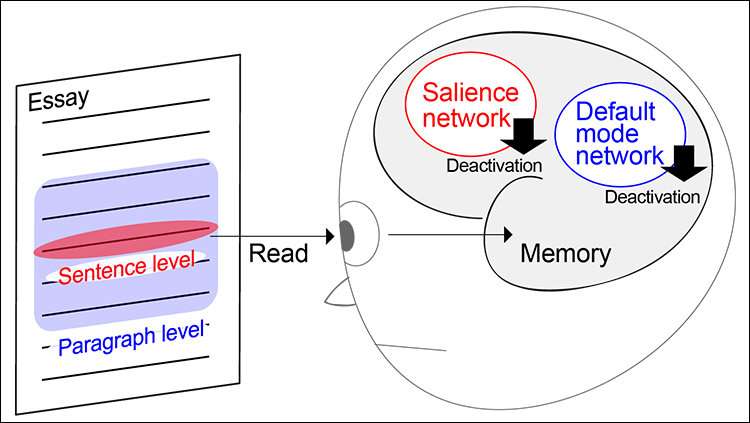How we remember what we read

The results of two human experiments published in eNeuro reveal patterns of brain activity associated with successful memory of a just-read text. The research provides new insight into the memory processes involved in natural reading.
In one experiment, Naoyuki Sato and colleagues measured the electrical activity generated participants' brains and tracked their eye movements as they read 4,000- to 8,000-word essays. In a separate experiment, the researchers measured blood flow changes in the brain as different group of participants read the same essays. Participants' memory of the text was assessed by having them write a summary of what they read.
By comparing participants' brain activity to how well they remembered the essays they read, the researchers found successful memory of the text was associated with deactivation of two sets of brain regions: the salience network at the sentence level and the default mode network at the paragraph level.
These deactivations may indicate a mechanism by which the brain filters out irrelevant information during reading in order to focus on committing the text to memory.
More information: Successful encoding during natural reading is associated with fixation-related potentials and large-scale network deactivation, eNeuro, DOI: 10.1523/ENEURO.0122-18.2018
















